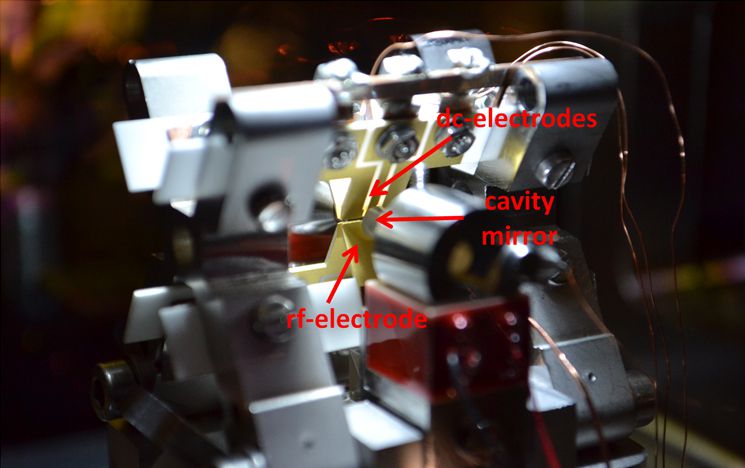Cavity QED research
Trapped ions are one of the most promising qubits for the implementation of quantum information systems. We use optical cavities to facilitate the efficient interconnection of individual ion traps by using photonic links to form larger scale systems. In the ITCM Research Group we are conducting a variety of advanced research experiments to investigate different schemes that create efficient ion-photon interfaces.
Probalistic ion-photon interaction
With more than one ion inside the trap, a cavity can be used to aid the generation of entanglement between the individual ions. In addition to studying quantum effects such as entanglement and de-coherence, this source of entangled ions could be used as the main resource of an alternative type of quantum information processor.
Find out more about probalistic ion-photon interaction
Deterministic ion-photon interface
We use single trapped and laser-cooled ions for temporary storage and manipulation of quantum states, and use freely propagating photons to transmit this quantum information over long distances. An ion strongly coupled to the mode of an optical cavity in the context of cavity-QED provides the link that can be used for mapping the quantum information.
Find out more about deterministic ion-photon interface
Fibre cavity ion trap
The Sussex Endcap trap project aims to couple a single atom to a micro-cavity comprised of two very small and highly-reflecting mirrors in order to generate and control single photons of light. This type of cavity provides a very strong interaction between ions and photons due to the small mode volume and thus enables novel schemes to interface ionic and photonic qubits.
